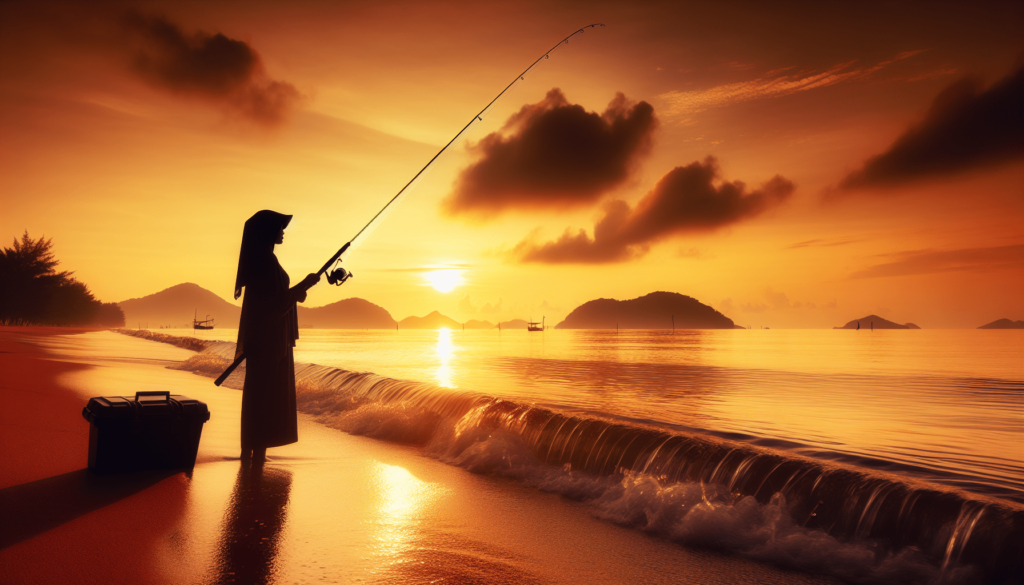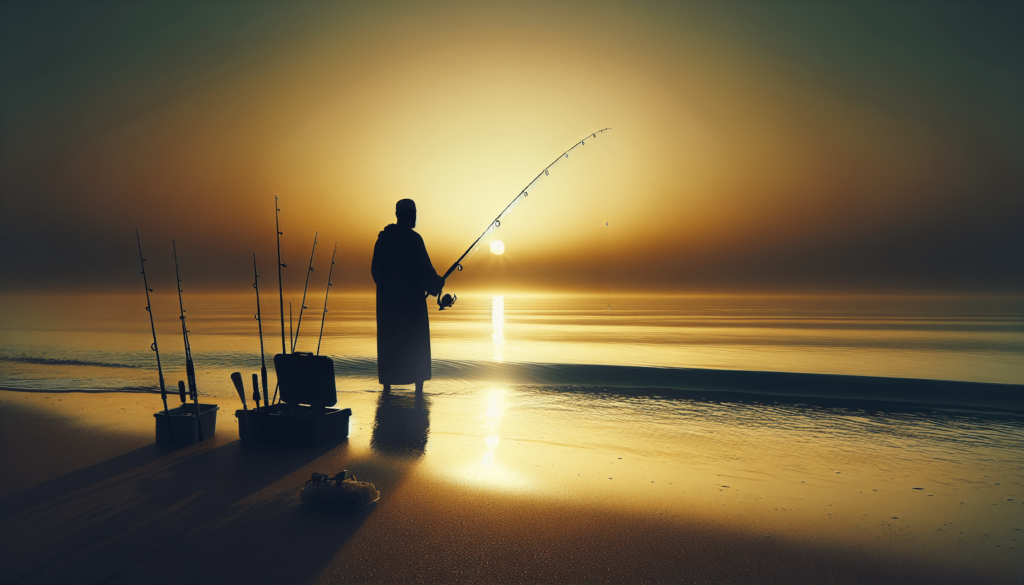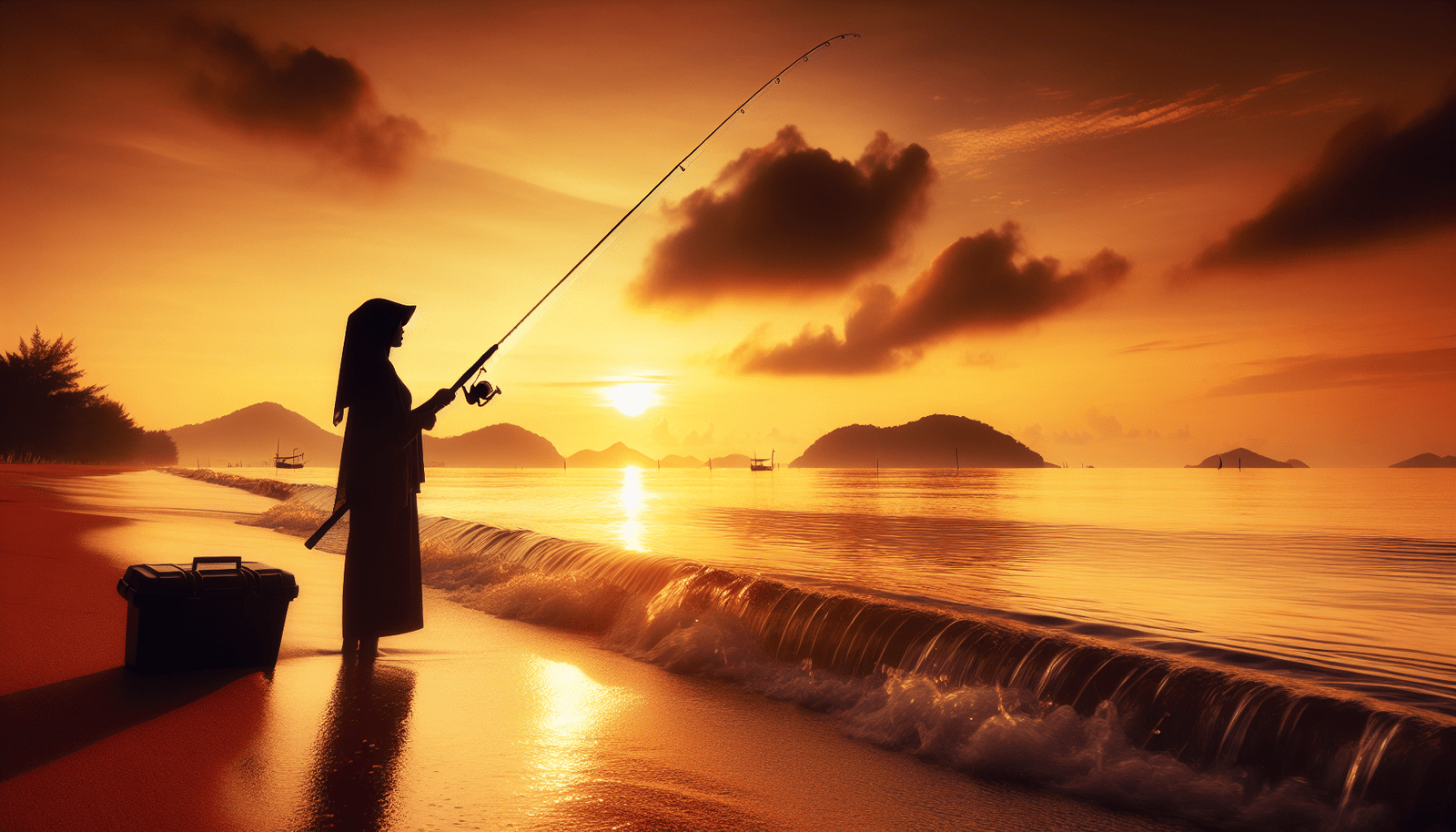Embarking on your first shore and beach fishing adventure can be a thrilling yet daunting experience. This insightful article is crafted to guide you through the basics of shore and beach fishing, ensuring you’re well-equipped with the right strategies to make your initial foray into this exciting world a resounding success. From understanding the best time of day to cast your line to selecting the perfect bait to reel in those elusive catches, we’ve got you covered. Prepare yourself to be immersed in essential tips and tricks that will transform you from a fishing novice to an adept angler, ready to conquer the shorelines and beaches with confidence.
Difference between shore and beach fishing
As you begin your fishing journey, it’s important to understand the difference between shore and beach fishing. Shore fishing refers to angling from the edge of water bodies like lakes, rivers, and estuaries. It can include fishing from docks, piers, or directly off the banks. Beach fishing, on the other hand, specifically involves casting a line from the sandy or pebble-lined shores of the ocean or sea. Each offers distinct experiences and challenges, from the species you’ll encounter to the techniques you’ll use.
Benefits of shore and beach fishing for beginners
Shore and beach fishing are fantastic for beginners for several reasons. Firstly, they require minimal investment in equipment and permits compared to boat fishing. They’re also accessible; you can often find a spot not far from home. Additionally, they offer a peaceful way to connect with nature, learn about local ecosystems, and progressively hone your fishing skills without the need for a boat.
Basic equipment needed for shore and beach fishing
Getting started doesn’t require a lot. Essential gear includes a fishing rod and reel, suitable fishing line, hooks, bait or lures, and a basic tackle box. For beach fishing, a longer rod may be preferable to help cast beyond the breaking waves. A pair of polarized sunglasses can also be a game-changer, reducing glare and helping you spot fish and underwater structures.
Choosing the Right Fishing Gear
Types of rods and reels for beginners
For newcomers, spinning rods and reels are highly recommended due to their versatility and ease of use. They can handle a variety of fishing conditions and techniques. When selecting, consider the length of the rod, action, power, and the type of reel that matches your fishing environment. A medium power, moderate action, 7 to 9 foot rod is a good all-rounder for shore and beach fishing.
Selecting the right fishing line
Your choice in fishing line can significantly impact your success. Monofilament lines are great for beginners due to their forgiving nature and versatility. They’re suitable for a variety of fishing conditions and easier to knot than other lines. However, if you anticipate fishing in areas with strong currents or sharp rocks, considering a braided line could be beneficial for its strength and durability.
Importance of choosing the right bait and lures
The right bait or lure can make all the difference. For beginners, it’s often advisable to start with live bait as it can be more universally enticing to fish. Worms, shrimp, and small bait fish are excellent options. Lures can be very effective too, but require a bit more skill and understanding of the fish you’re targeting. Experimenting with different types and learning from each outing is part of the journey.

Selecting the Perfect Fishing Spot
How to read the beach
Reading the beach involves understanding the visual cues that indicate potential hotspots for fishing. Look for areas where waves break differently, indicating sandbanks and troughs where fish might gather. Also, keep an eye out for dark patches in the water, which could signify deeper holes that hold fish.
Understanding tides and their impact on fishing
Tides play a massive role in beach fishing. Generally, a rising or high tide brings fish closer to shore, feeding on the small creatures churned up by the water’s movement. Learning to track the tides and planning your fishing trips around favorable tide conditions can greatly increase your chances of a good catch.
Identifying fish-holding structures
Underwater structures such as rock piles, jetties, and weed beds offer shelter and food for fish. Identifying these structures can help you find where fish are likely holding. Even subtle features, like changes in bottom composition seen through clear water, can indicate promising spots for casting your line.
Tides and Timing
The best times to fish based on tide cycles
The period two hours before and two hours after high tide is often the most productive time for beach fishing. However, don’t overlook the potential of low tide; it can provide unique opportunities to spot fish-holding features that are submerged at higher tides.
How moon phases affect fishing
Moon phases influence the gravitational pull on Earth’s waters, affecting fish behavior. Full and new moons typically produce stronger tides and can result in better fishing conditions, as fish are more active and feeding during these periods.
Seasonal considerations for shore and beach fishing
Different seasons bring different fish species closer to shore. Spring and summer are popular for shore and beach fishing, offering a wider variety of species. However, don’t discount the cooler months; they can offer excellent opportunities for larger predatory fish.

Casting Techniques for Shore and Beach Fishing
Basic casting techniques
Mastering a basic overhead cast is a great start. It involves holding the rod with your dominant hand and using your other hand towards the base for additional control. Swing the rod backward over your shoulder, then swiftly forward, releasing the line at a 45-degree angle towards your target. Practice this technique to improve your distance and accuracy.
How to achieve longer casts
Longer casts can be achieved by selecting the appropriate gear, such as longer rods and aerodynamic lures or bait setups. Perfecting your casting technique and timing can also significantly enhance casting distance. Consider utilizing the pendulum cast or off-the-ground cast as you progress, both known for achieving greater distances.
Dealing with wind and other environmental factors
Wind can be both a challenge and an advantage. Casting into the wind may require more effort and heavier tackle to achieve desired distances. However, casting with the wind at your back can greatly increase your casting range. Adjust your casting technique and tackle according to the wind direction and strength to optimize your fishing experience.
Bait and Lure Selection
Natural baits vs. artificial lures
Natural baits are often more attractive to fish due to their scent and texture, making them an excellent choice for beginners. Artificial lures, while requiring more skill to use effectively, can be more efficient in covering more water and enticing aggressive strikes from predatory fish. Experimenting with both will enhance your understanding and adaptability on the water.
Best baits for common shore and beach target species
The best bait often depends on the target species. For instance, using small crabs and shrimp can be irresistible to species like drum or whiting. For predatory species like bass, smaller fish or eels might be more effective. Research the diet of your target species and try to match your bait accordingly.
How to properly rig baits and lures
Proper rigging is crucial for presenting your bait or lure effectively and preventing loss or damage. For live baits, learning to hook them in a way that keeps them lively and attractive is vital. With lures, ensuring they’re attached securely and able to move naturally in the water can make a difference in enticing a bite.
Fishing Safety and Etiquette
Understanding local regulations and obtaining permits
Before heading out, familiarize yourself with local fishing regulations and ensure you have the necessary permits. Regulations are in place to protect fish populations and ensure a sustainable future for the sport.
Safety tips while fishing from the shore and beach
Safety should always be a priority. Be aware of your surroundings, especially the water conditions and weather. Wear appropriate footwear to protect against sharp rocks and slippery surfaces. Remember to apply sunscreen and stay hydrated.
Respecting wildlife and practicing catch and release
Practicing catch and release not only contributes to the sustainability of fish populations but shows respect for nature and fellow anglers. Use barbless hooks or lures and handle fish with care, minimizing their time out of water.
Reading Water and Weather
How to interpret water movements and currents
Observing water movements and currents can give clues about where fish might be. Currents that move food naturally attract fish. Look for converging currents or areas where the water changes direction, as these can be productive fishing spots.
The effect of weather on fish behavior
Weather changes, especially sudden ones, can affect fish behavior. Barometric pressure changes before a storm can make fish more active. Conversely, high-pressure systems might make them less inclined to feed. Learning how weather influences fish behavior in your local fishing spots can be incredibly valuable.
Adapting strategies based on water and weather conditions
Adaptability is key to successful fishing. Changing your location, technique, or bait based on current conditions can turn a slow day into a productive one. Whether it’s casting into the wind or choosing a different time of day, being flexible and observant pays off.
Knot Tying for Beginners
Essential knots for shore and beach fishing
Learning a few basic knots can significantly improve your fishing success. The clinch knot, for example, is great for attaching hooks, swivels, and lures. The uni knot is versatile, strong, and can be used for tying line to tackle or joining lines. Practicing these knots can enhance your efficiency and reliability on the water.
Step-by-step guide to tying strong and reliable knots
- Clinch Knot: Pass the end of the line through the eye of the hook, then wrap it around the standing line 5-7 times. Bring the end back and pass it through the small loop near the eye, then through the big loop you just created. Wet the knot, pull tight, and trim the excess.
- Uni Knot: Pass the line through the eye and double back parallel to the standing line. Make a loop by laying the tag end over the double lines. Wrap the tag end around the double line and through the loop 5-6 times. Wet and pull the knot tight against the eye.
Practicing knot tying to optimize fishing success
Practicing knot tying at home can save precious time on the water. Using pieces of old fishing line and hooks, practice the knots until you can tie them confidently and quickly. This will ensure your setup is secure and reduce the risk of losing a fish due to a faulty knot.
Conservation and Sustainability Practices
Understanding the importance of catch and release
Catch and release is crucial for maintaining healthy fish populations and ensuring future generations can enjoy fishing as a sustainable outdoor activity. It supports conservation efforts and helps manage fish species that are under environmental stress.
Using tackle that minimizes harm to fish
Employing tackle designed to minimize harm, such as barbless hooks and soft-mesh nets, can protect the fish during the catch and release process. Such practices ensure the fish has the best chance of survival upon release.
Contributing to local conservation efforts
Being a responsible angler includes contributing to local conservation efforts. This can be through participating in or donating to habitat restoration projects, educating others about sustainable practices, or simply practicing ethical fishing habits. Your involvement makes a difference in preserving the ecosystems we enjoy.


